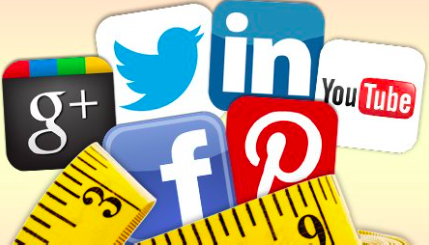Is live streaming already a part of your 2017 marketing strategy? Facebook, Instagram, Twitter, Snapchat and even Youtube are competing to be the go-to social platform when it comes to live video and stories. While millions of social media users have already embraced the technology, sharing their daily lives with their followers and friends, it is the brands and advertisers who have not all seen its full potential. But they should.
 Live video content will continue to grow and become more popular because even though Social Media Examiner reported only 14% of marketers experimented with it last year, 43% are planning to use it in 2017. Furthermore, after Facebook introduced Facebook Live, the company’s profit tripled. Mark Zuckerberg stated that, “Just as people used words and text to express themselves in the past, in the future more of that is going to be video.”
Live video content will continue to grow and become more popular because even though Social Media Examiner reported only 14% of marketers experimented with it last year, 43% are planning to use it in 2017. Furthermore, after Facebook introduced Facebook Live, the company’s profit tripled. Mark Zuckerberg stated that, “Just as people used words and text to express themselves in the past, in the future more of that is going to be video.”
So how can brands utilize this immersive live video experience?
1.) Host Interviews and Q&As
Viewers are able to ask questions during the stream and get real-ti
me answers. This platform is perfect for encouraging two-way conversations and creating loyal customers or brand advocates. News outlets, sports teams, and other brand have hosted these type of live videos.
2.) Customer Service/Support
Brands can host almost what one could refer to as, “office hours” where they can address the latest concerns or issues customers are having. Viewers can once again ask questions and receive answers in real time, driving engagement.
3. ) Product Launch or Demonstrations
Way back in 2016 General Motors became the first automobile company to livestream the unveiling of a product – the 2017 Chevy Bolt EV. Other companies have followed suit.
4.) Live Events
Live events can be anything from a sports game, presentation, press c onference, or concert. The Tribeca Film Festival live streamed a panel at Radio City Music Hall just tonight, including the likes of Francis Ford Coppola, Robert De Niro, Al Pacino, James Caan, Robert Duvall, Diane Keaton, and Talia Shire to reminisce about two of my favorite movies of all time – The Godfather and Godfather Part II (we can argue which is better another time).
onference, or concert. The Tribeca Film Festival live streamed a panel at Radio City Music Hall just tonight, including the likes of Francis Ford Coppola, Robert De Niro, Al Pacino, James Caan, Robert Duvall, Diane Keaton, and Talia Shire to reminisce about two of my favorite movies of all time – The Godfather and Godfather Part II (we can argue which is better another time).
5.) Behind the Scenes
Lastly, another marketing tactic with live video content is providing viewers with a glimpse of what goes on behind the scenes or backstage. Many different brands including Target, Dunkin Donuts, the Tonight Show, GMA and more have participated in this type of live content creation. Even 1M viewers tuned into a live cam at and Upstate NY zoo to watch April the Giraffe give birth!
As you can see, brands have a few options when planning their live video strategies. But for any advertiser hoping to stay relevant on social media, they will need to become familiar and comfortable with the live streaming format. It’s the new the norm.

 As soon as any content is posted on a social channel, the internet generates data. You can easily find out your content is received and acted upon (if at all). These type of tracking tools are great ways to note return on investment (ROI).
As soon as any content is posted on a social channel, the internet generates data. You can easily find out your content is received and acted upon (if at all). These type of tracking tools are great ways to note return on investment (ROI).
 of people more likely to discover things via social media-rather than the television-and NBC knows it must capitalize on this market. Marketers in general must take advantage of the different platforms that offer different attractions for users (ex: Twitter is where expert commentators are while Snapchat is great for in-the moment videos, fun and interactivity of filters). How will they do it this time around? Social media is constantly changing and has greatly evolved even since the London Games in 2012, just four years ago.
of people more likely to discover things via social media-rather than the television-and NBC knows it must capitalize on this market. Marketers in general must take advantage of the different platforms that offer different attractions for users (ex: Twitter is where expert commentators are while Snapchat is great for in-the moment videos, fun and interactivity of filters). How will they do it this time around? Social media is constantly changing and has greatly evolved even since the London Games in 2012, just four years ago.